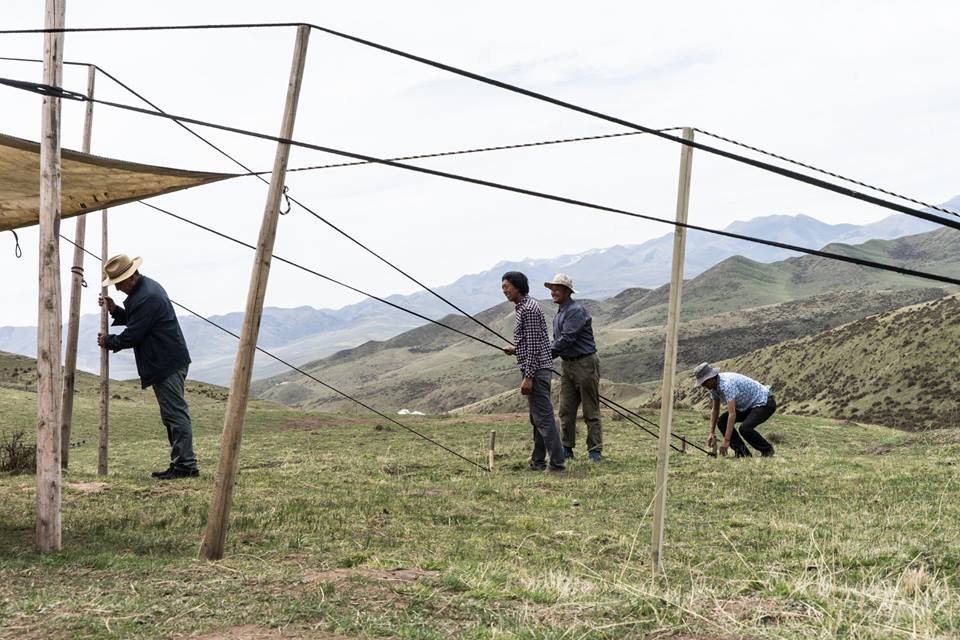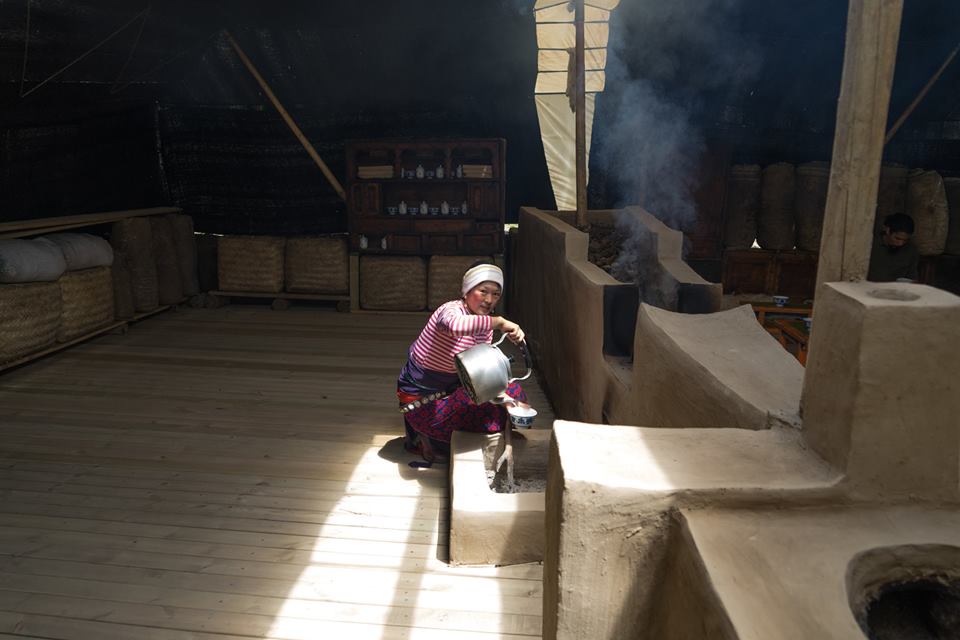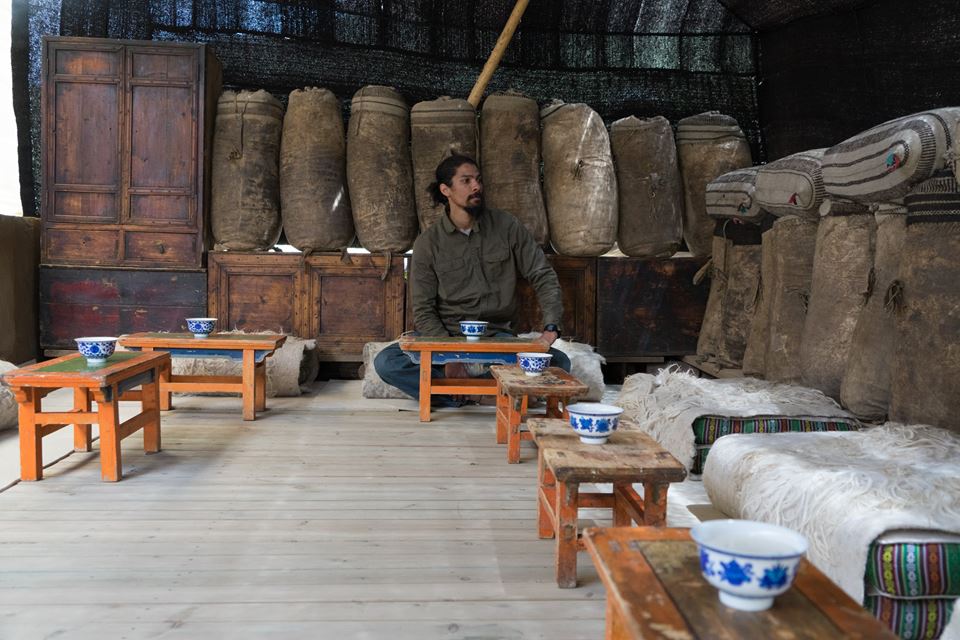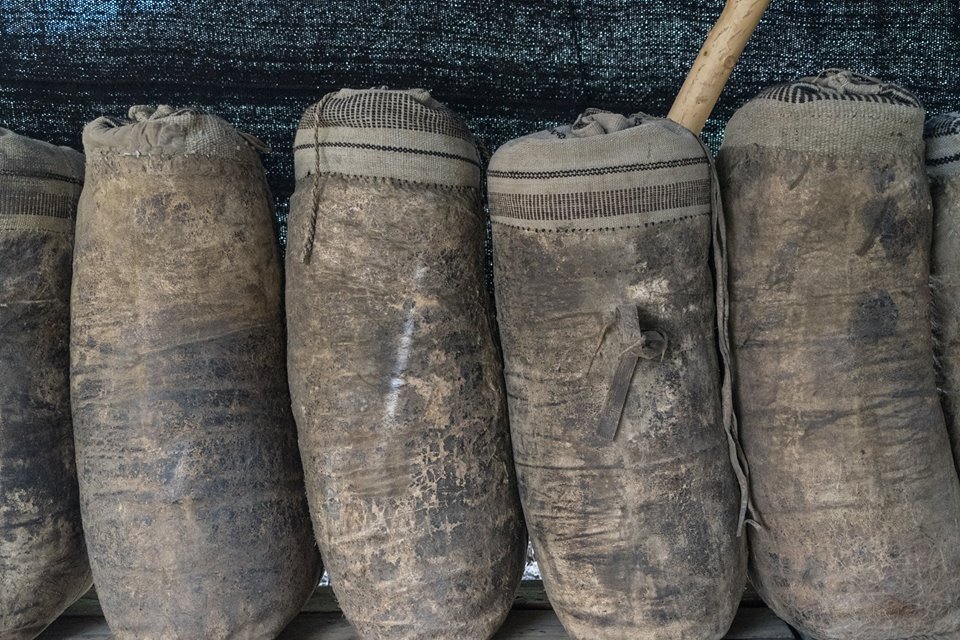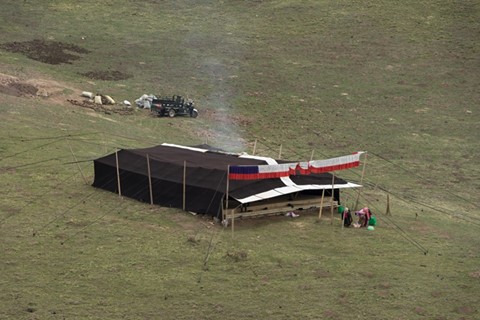Nomad Black Tents
Nomads lived in large yak hair tents moving camp 3 to 4 times in a grazing season, following their animals to new pastures. A generation or two ago, families were much larger and everyone participated in the daily chores; women milked the dris and processed the milk, making butter, dried cheese and yogurt and made the dung ready for use as combustible. Children from the age of six took sheep to graze, and men lead the yaks to higher pasture and brought them home every night. In the evenings, everyone gathered around the fire and a meal of thukpa, and the elders told stories.
Now families are smaller and scattered, children at school, old people nearer to the monastery and the children, leaving the young couples to tend the animals. The tents are more reduced in size and lighter, and most often made of canvas.
Lungta is a cooperative comprising about ten families and their common animals, 140 yaks. They have set up a yak hair tent as they were in the times of large families, with a large mud stove in the middle, bringing back typical nomadic implements, bags containing supplies lined up on the inside, yak hair ropes and cheese drying cloths woven from yak hair and sheep wool. It is a beautiful and inviting space for all to get a glimpse of a lifestyle on the wane.
